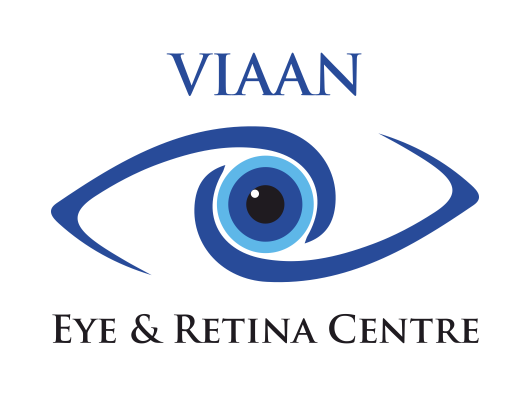Specs Removal/Lasik
Imagine life without contacts or glasses. You can see clearly in bright, vibrant color. You no longer have to squint. Activities like hiking, biking, swimming, tennis and golf are much more convenient because you don’t have to worry about losing a contact lens or your glasses sliding down your nose. For many, LASIK is helping people become less dependent on contacts and glasses. However, while LASIK can be an amazing procedure, your decision on where to go should not be made lightly. The surgeon you choose can mean the difference between excellent results or real complications.
How the eye works Understanding vision
The human eye is truly remarkable in its design. Each eye is unique. Each eye condition is also unique. Vision quality is largely determined by the size and shape of our eyes. With a healthy eye, light rays entering the eye are focused directly on the retina to form a sharp image, which is then sent to the brain via the optic nerve, resulting in a visual image. When the eye’s dimensions are not well-aligned, the light rays are not correctly focused. This results in a refractive error such as nearsightedness, farsightedness and astigmatism (an irregular curvature of the cornea). Refractive errors are very widespread and affect people of all ages. Normal vision With normal vision, the eye’s dimensions are well-aligned. Light rays are focused directly on the retina to create a clear image.
UNDERSTANDING REFRACTIVE ERRORS
Clear vision in the normal eye is the result of light rays passing through the cornea, pupil and lens and focusing directly on the retina.
Clear vision
in the normal eye is the result of light rays passing through the cornea, pupil and lens and focusing directly on the retina.
Nearsightedness (Myopia)
occurs when the cornea is too curved or the eye is too long. This causes light to focus in front of the retina, resulting in blurry distance vision.
Farsightedness (Hyperopia)
occurs when the cornea is too flat in relation to the length of the eye. This causes light to focus at a point beyond the retina, resulting in blurry close vision.
Astigmatism
occurs when the cornea is shaped like a football (more curved in one direction than the other) and often occurs with nearsightedness and farsightedness. This causes light to focus in more than one point on the retina, resulting in blurry and distorted vision.
Types of refractive surgery
• Laser In Situ Keratomileusis (LASIK)
• Photorefractive Keratectomy (PRK)
• Small Incision Lenticule Extraction (SMILE)
• Phakic Intraocular Lenses (IOLs)
• Corneal Inlays
• Clear Lensectomy
• Intracorneal Ring Segments (INTACS)
• Radial Keratotomy and Astigmatic Keratotomy
Corneal refractive surgery alters the curvature of the cornea to focus light more precisely on the retina. The goal of refractive surgery is to decrease dependence on eyeglasses or contact lenses. Most people who undergo refractive surgery achieve this goal; over 95% do not need corrective lenses for distance vision. Ideal candidates for refractive surgery are healthy people aged 18 and older with healthy eyes who are not satisfied wearing eyeglasses or contact lenses.
Contraindications to refractive surgery include
• Active ocular diseases, including severe dry eye
• Autoimmune or connective tissue diseases, which can impair wound healing
• Use of isotretinoin or amiodarone
Refraction should be stable for at least 1 year prior to surgery. Latent herpes simplex virus may be reactivated after surgery; patients should be advised accordingly.
Adverse effects of refractive surgery include temporary symptoms of
• Foreign body sensation
• Glare
• Halos
• Dryness
Potential complications include
• Overcorrection
• Undercorrection
• Infection
• Irregular astigmatism
The overall complication rate is low; chance of vision loss is < 1% if the patient is considered a good candidate for refractive surgery preoperatively.
Laser In Situ Keratomileusis (LASIK)
Characteristics of LASIK and Femto-LASIK
Since its introduction in the early 1990s, laser-assisted in-situ keratomileusis, or LASIK for short, has become the most widely performed laser treatment method for correcting refractive errors. KEY POINTSARE
• Generally quick visual recovery
• Most frequently performed procedure
• Treatment standard for more than 20 years
• Widely available and performed by many surgeons
• Femto-LASIK: the entire procedure is done with lasers only
Comparing the two proven procedures
Treatment steps of LASIK and Femto-LASIK
With traditional LASIK, a controlled blade (microkeratome) is used to create the flap (a kind of hinged piece of corneal tissue). With advanced bladeless Femto-LASIK, a highly precise flap is quickly created with a femtosecond laser. Prior to treatment Anesthetic eye drops are applied to the eye. An eyelid holder prevents the eye from blinking during the procedure.
Creating the flap
The microkeratome creates a flap, a hinged corneal piece of tissue.
Folding back the flap
The flap is gently folded back, exposing the inner corneal tissue to be treated
Correcting the error
An excimer laser reshapes the corneal tissue, correcting the refractive error.
Repositioning the flap
The flap is returned to its original position, protecting the eye like a natural bandage
Photorefractive Keratectomy (PRK)
In PRK, unlike laser in situ keratomileusis (LASIK), no corneal flap is created. In PRK, the corneal epithelium is removed and then the excimer laser is used to sculpt the anterior curvature of the corneal stromal bed. PRK is used to treat myopia, hyperopia, and astigmatism. The epithelium typically takes 3 to 4 days to regenerate; during this time a bandage contact lens is worn. PRK may be more suitable for patients with thin corneas or epithelial basement membrane dystrophy.
Phakic Intraocular Lenses (IOLs)
Phakic IOLs are lens implants that are used to treat moderate to high (eg, 4 to 20 diopters) of myopia with or without astigmatism in patients as an alternative to laser vision correction. Phakic IOLs achieve superior visual quality compared to laser vision correction because they do not alter the corneal curvature. Also, there is no risk of corneal ectasia since this is additive technology and no corneal stromal tissue is ablated. Unlike in cataract surgery, the patient’s natural lens is not removed. The phakic IOL is inserted directly anterior or posterior to the iris through an incision in the eye. This procedure is intraocular surgery and must be done in an operating room.
Corneal Inlays
Corneal inlays are implants placed into the corneal stroma via a lamellar pocket or flap to treat presbyopia. The only corneal inlay available in the US is made of polyvinylidene fluoride and carbon and is a small aperture inlay, which improves near vision by increasing depth of focus. These inlays are placed only in the nondominant eye of presbyopic patients.
Intracorneal Ring Segments (INTACS)
INTACS are thin arc-shaped segments of biocompatible plastic that are inserted in pairs through a small radial corneal incision into the peripheral corneal stroma at two-thirds depth. After INTACS are inserted, the central corneal curvature is flattened, reducing myopia. INTACS are used to treat mild myopia (< 3 diopters) and minimal astigmatism (< 1 diopter). INTACS maintain a central, clear, optical zone because the 2 segments are placed in the corneal periphery. INTACS can be replaced or removed if desired.
If you are considering LASIK or Femto-LASIK surgery, you probably have many questions. Some of the most frequent ones are addressed here. This information is not intended to replace consultation with your eye doctor.
Is LASIK or Femto-LASIK right for me?
Eligibility for Laser Vision Correction depends on many factors. Only your eye doctor can determine whether LASIK, Femto-LASIK or possibly another treatment option is best suited for you.
What advantages does Femto-LASIK offer?
The fast and highly precise femtosecond laser enables the surgeon to quickly and predictably create a hinged corneal flap without a blade. The patient is then comfortably relocated to the excimer laser to complete the treatment.
Is it safe?
Complications after LASIK or Femto-LASIK surgery are rare, but cannot be completely ruled out. As with all medical procedures, there is always a risk of possible side effects. Your eye doctor will discuss these with you.
How do I prepare?
If you wear contact lenses, most surgeons recommend switching to glasses a few weeks before surgery. You are advised not to apply makeup, lotions or perfume the day you have surgery. Also, it is suggested that you arrange to have someone bring you home afterward.
How long does the procedure take?
The treatment procedure itself only takes about 15 minutes for both eyes.
What happens after surgery?
A protective bandage or eye shield is placed over the eye to avoid rubbing it. Eye drops and possibly other medication may be prescribed to prevent infection and aid the healing process. A post-op examination the next day is customary, as are further examinations for the following weeks or months.
When can I return to my normal activities?
You will be able to resume most of your normal activities and return to work within the first week.
How long is the recovery time?
Complete visual recovery usually takes two to three weeks


